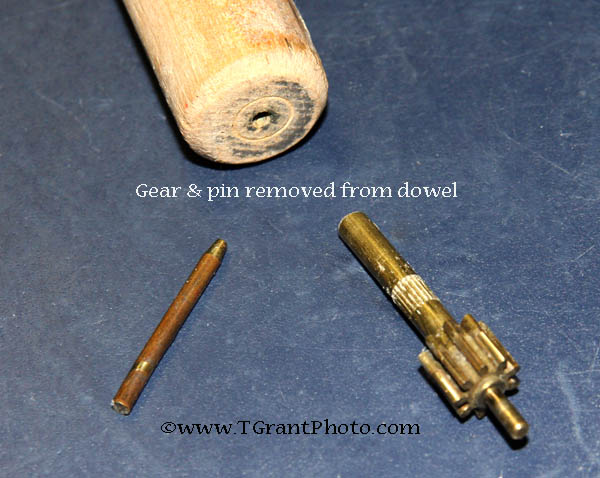Hickok Tube Tester - Roll Chart Repair Tips
If you're having trouble with your tube tester's roll chart sticking or spooling out too much, try these fixes!
If your roll chart bunches up or unspools too much ---
In some tube testers, such as our Hickok 600a, there's a metal gear that's pressed into the end of the two wooden roll chart dowels. This gear can become loose and allow the dowel to slip too much as the roll chart is advanced. This makes the roll chart unspool faster than it can take up.
To repair this, first slowly advance the roll chart so that it's all on one of the wooden dowels. Carefully detach the end of the chart from the empty dowel. Then carefully apply some superglue (or epoxy) to the point on each wooden dowel where the dowel attaches to its gear. Be careful not to get the glue on the gear teeth. Allow to dry.
Finally, reattach the roll chart to the empty dowel. Three pieces of Scotch tape will do the job (note, however, that the tape may dry up and become yellow after ten years). Your roll chart should now operate smoothly!
If the roll chart gets very tight towards the end - -
Your tube tester might have the original sized dowels that came with the original roll chart. If the chart was replaced with an newer, updated chart, it's undoubtedly longer. When the chart is fully wrapped, it just won't fit between the two dowels. On our Hickok 600a, the original dowels were 3/4" o.d. (outside diameter). You can buy a smaller, 5/8" diameter dowel at a local builders supply store. There's often a choice of the type wood that's used for the dowel, opt for an oak dowel, they seem a little harder, and will hold the gear and pin better. Be sure to sight down the dowel you're buying to check it's straightness. Measure the length carefully, comparing it to the original dowel. A tad short is better than too long, so measure twice and cut once!
Be very careful removing the brass gears from the ends of the original dowels. Brass is relatively soft, and it's possible to crush or break the gear teeth when you try to pull the gear from the original dowel. Use caution!

Carefully drill pilot holes on each end of the replacement dowels. A drill press works well here, but it can be done with a hand drill if you're careful. The pilot holes should be slightly smaller than the pin, so you can tamp the pin in with a small hammer. You can attach the chart to the dowel with Scotch adhesive tape, (realize that tape will yellow and dry after about ten years). Allow a litle slack between rollers when you attach the chart. If you're not sure, roll the chart back and forth and then readjust the atached ends.
After these fixes, if the roll chart still binds --
Check the length of the replacement dowels. One millimeter too long will cause them to bind against the mounting brackets. Also, check the alignment of the gear that was inserted into the end of the new dowel. The brass gear must remain parallel to the thumbwheel gear at all times. If it's crooked, or wobbles as it turns, the thumbwheel will stick once each revolution. Finally, never lubricate the gears, you don't want oil all over your chart!
Note: The above content is copyright TGPSales & TGrant Photo. Copying or use on another website is prohibited
